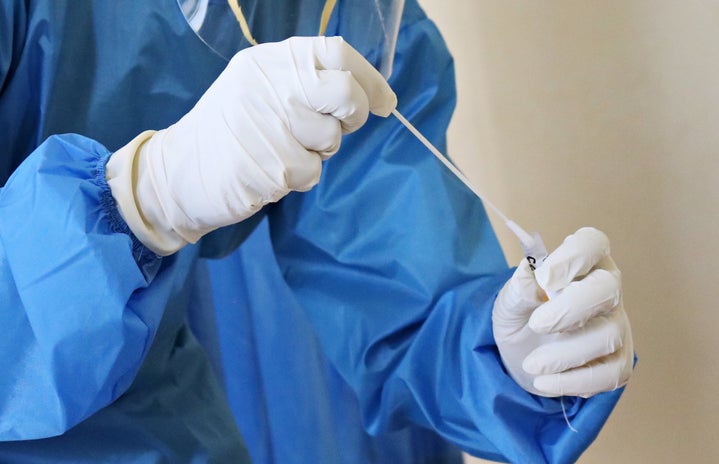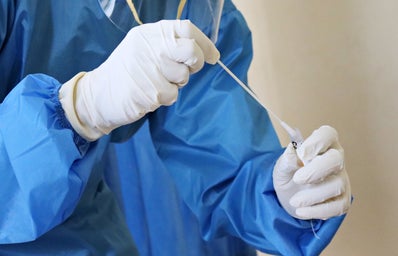Women in STEM have come a long way, and today, young female scientists have many heroes to look up to — heroes like Jennifer Doudna and Emmanuelle Charpentier, who won the 2020 Nobel Prize in Chemistry for their discovery of CRISPR. However, it’s easy to forget that women have been conducting scientific research for a long time, often overcoming massive challenges to do so. Here are five female scientists who may or may not have been mentioned in your textbooks, but who revolutionized science and medicine with their work.
Rosalind Franklin
Dr. Rosalind Franklin used x-ray crystallography to capture images of DNA, RNA, and viruses. While we’ve all seen images of DNA, its structure used to be a mystery, and her work was crucial for understanding DNA’s structure. I highly recommend googling Photo 51 if you haven’t seen it before — it’s amazing how clearly you can see the double helix structure. Rosalind Franklin tragically died of ovarian cancer at only 37 years old, possibly due to radiation from her work. She was not included in the Nobel Prize given for the discovery of DNA’s structure, but in recent years, her incredible findings have begun to be acknowledged.
Francis Oldham Kelsey
Dr. Frances Kelsey worked at the FDA, and soon after starting her job, she was told to review a sleeping pill called thalidomide. Since thalidomide was commonly used in other countries, it was considered to be a clear-cut approval. However, Dr. Kelsey didn’t think there was enough evidence that the drug was safe for pregnant women and their fetuses. Although the effect of drugs during pregnancy wasn’t well understood at the time, during graduate school, Dr. Kelsey had worked on research about the effect of drugs on a fetus, so she rejected the proposal and requested more evidence. Despite the intense pressure from the company making thalidomide, Dr. Kelsey continued to reject their proposals due to insufficient evidence. Within a year, reports from other countries revealed that thalidomide caused serious birth defects. By preventing thalidomide from being approved in the United States, many lives were saved, and she was given the President’s Award for Distinguished Federal Civilian Service.
Florence Nightingale
Florence Nightingale is considered to be the founder of nursing for her work during the Crimean War, where she created important sanitization procedures. However, you may not have heard of her work as a statistician. During the war, the majority of deaths were caused not by wounds, but by preventable diseases. Florence Nightingale created important figures that showed how deaths could be prevented. She published several works on how to run a hospital and the importance of cleanliness in hospitals.
Barbara McClintock
Dr. Barbara McClintock was a geneticist whose work in corn found that chromosomes stored hereditary information. Despite this important finding, Cornell University, where she had earned her B.S., M.S., and Ph.D., refused to hire a female professor. She continued her research elsewhere and later discovered that genes could move. These genes are called transposable elements or “jumping genes,” and they play an important role in heredity. Barbara McClintock was largely unacknowledged for years, but as research into DNA continued, the significance of her findings was finally realized, and she became the first woman to win a Nobel Prize in Physiology or Medicine without any co-recipients.
Lynn Margulis
Dr. Lynn Margulis taught here at UMass Amherst for many years! She is best known for discovering endosymbiotic theory, which proposes that certain organelles came from ancient prokaryotic cells absorbing other cells. Although this idea was initially thought to be controversial, and Lynn Margulis’ first paper was rejected 15 times, the scientific community eventually realized what a revolutionary and well-supported theory it was. Without Lynn Margulis’ work, we would not know how eukaryotic cells, which make up humans, other animals, plants, and more, came to be.
Although women in STEM have made strides toward equality, challenges remain. Only 3% of Nobel laureates in the sciences are women, so there’s a long way to go for female scientists to be properly acknowledged for the work they do and have done.
Sources: 1, 2, 3, 4, 5, 6, 7, 8, 9
Can’t get enough of HC UMass Amherst? Be sure to follow us on Instagram, listen to us on Spotify, like us on Facebook, and read our latest Tweets!


